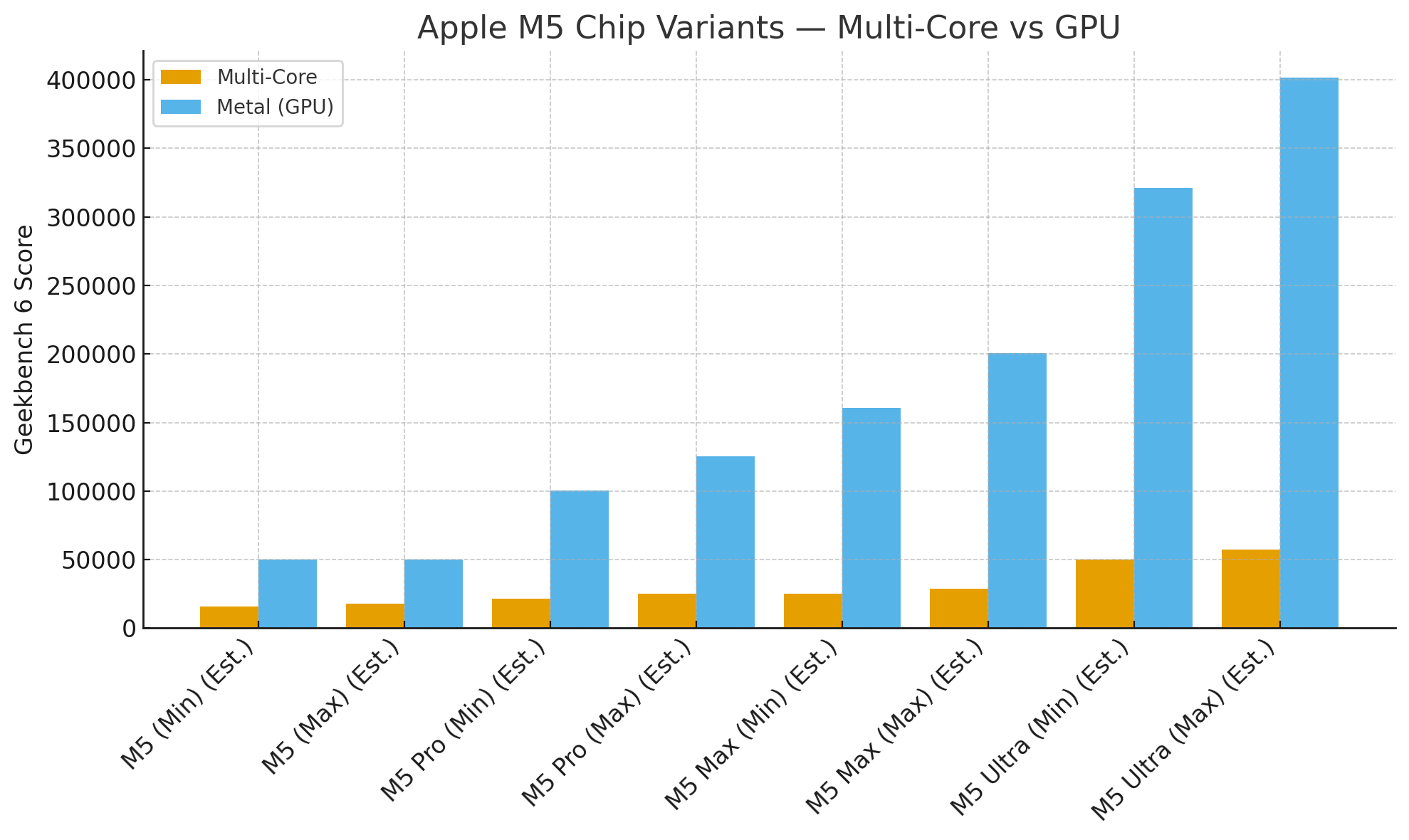Introduction to Apple’s M5 Chip
Apple recently announced its new M5 chip, which powers the latest 14-inch MacBook Pro, iPad Pro, and Apple Vision Pro. The M5 chip boasts a next-gen GPU with Neural Accelerators in each of its ten cores, enabling AI computations to run directly on the graphics hardware. This significant upgrade allows for over four times the peak compute performance for AI compared to the M4, while improving general graphics performance by about 45 percent.
The M5 Chip’s Architecture and Performance
The CPU of the M5 chip features up to ten cores, divided between four performance and six efficiency cores, delivering around 15% faster multithreaded performance. Notably, the 256GB and 512GB iPad Pro models utilize a nine-core CPU with three performance cores. The Neural Engine retains its 16-core design but offers greater processing capacity, and the unified memory bandwidth increases to 153GB/s, roughly 30% higher than the previous generation. Built on third-generation 3nm technology, the M5 maintains Apple’s unified memory structure, allowing the CPU, GPU, and Neural Engine to share the same pool of memory, reducing latency and power waste.
Apple’s Silicon Evolution and Future Prospects
Apple’s in-house processors have evolved rapidly since the first M1 arrived in November 2020. The new M5 chip aligns perfectly with Apple’s current focus on on-device Apple Intelligence, which plays an increasing role in tasks like image creation, LLM inference, and generative tools within apps. These workloads now rely more heavily on the GPU and Neural Engine, both of which are more deeply integrated in the M5. However, as Apple scales its silicon, cramming more cores and accelerators into compact devices, it faces inevitable thermal and power challenges.
Gemini’s Predictions for the M5 Ultra
I asked Gemini, Google’s AI system, to model what an M5 Ultra might look like if Apple continued its usual scaling pattern. The projections it came up with are obviously not based on any official data but rather on performance trends and architectural estimates derived from previous Apple chips. According to Gemini’s estimates, an M5 Ultra could feature a maximum of 24 performance cores, 8 efficiency cores, and 80 GPU cores, along with up to 240 billion transistors and 1100GB/s memory bandwidth. This would allow it to reach 401,392 points in GPU Metal benchmarks, about double the score of the M3 Ultra, the most recent Ultra chip announced in March 2025.
(Image credit: Apple)
Challenges and Future Directions
Those numbers, while obviously hypothetical, point to the huge challenges Apple would face if it targeted that performance. A processor drawing close to 200 watts would likely require more cooling than the compact Studio chassis can provide, ultimately raising the question of whether Apple would need to redesign its desktop systems to support the higher-end silicon, or whether it would stick to prioritizing efficiency over raw output. The M5 marks a steady step forward in Apple’s march through its silicon roadmap, bringing faster AI processing, better graphics, and memory performance to the MacBook Pro and iPad Pro.

Apple M5 chip variants – multi-core vs GPU
(Image credit: Future)
Conclusion
In conclusion, the M5 chip represents a significant milestone in Apple’s silicon evolution, offering improved performance, efficiency, and AI capabilities. While the prospects of an M5 Ultra are exciting, they also pose significant challenges in terms of thermal and power management. As Apple continues to push the boundaries of its silicon, it will be interesting to see how the company addresses these challenges and balances performance with efficiency. For more information on the Apple M5 chip and its potential applications, visit Here
Image Credit: www.techradar.com


